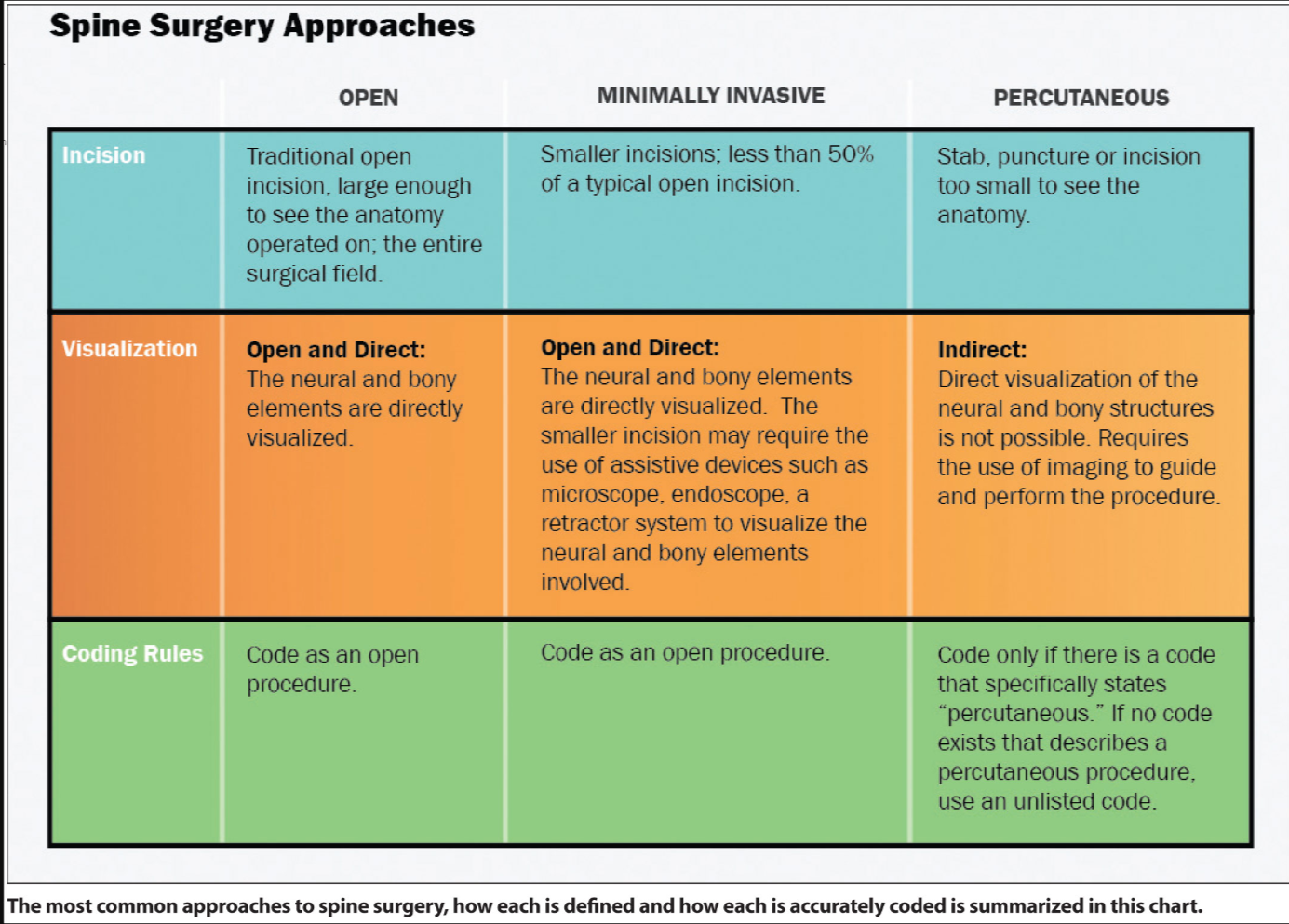This article aims to guide how to choose between different approaches for spinal surgery. It can be difficult to determine which CPT code to use for an open, minimally invasive, or percutaneous procedure. The value and payment of codes are based on the physician's work, time, and intensity. Different approaches, such as a small incision, a puncture, or a conventional open incision, require different levels of work effort and payment. The table below summarizes the most common approaches to spine surgery, how each approach is defined, and how each is accurately coded.
Most CPT codes for spine procedures are intended for traditional open procedures. Open procedures involve incisions that are large enough to provide a clear view of the entire surgical field. If a CPT code does not specify an approach, it is meant for an open procedure. For instance, CPT code 63030 is used to report an open laminotomy performed with direct visualization in the lumbar region.

Percutaneous surgery description
Percutaneous procedures involve using a stab or puncture approach to visualize the anatomy with the help of an endoscope and/or fluoroscopy or other imaging. According to CPT Assistant in July 2012, “if the visualization is done through image guidance or an endoscope, the procedure is considered percutaneous. If the instrument is used without direct visualization of the neurologic structures by naked eye/microscope and/or loupe magnification, then it would be consistent with a percutaneous laminectomy.” It is important to note that CPT codes are designed to describe a surgical technique and not a specific device and/or instrument. CPT codes for percutaneous procedures will always include the term “percutaneous” in the code description. If a code description includes the term percutaneous, it cannot be used for an open procedure.
Minimally Invasive Procedures
Minimally invasive procedures are surgical procedures that use a smaller incision than traditional open procedures but still allow for direct visualization of the pathology and the bony and neural elements involved. These procedures may use adjuncts such as endoscopes or tubular retractor systems to facilitate visualization. Minimally invasive spine procedures are coded with appropriate open spine codes and reimbursed the same as open codes since visualization is open and direct. Even if a laminotomy is endoscopically assisted, the procedure is still considered open if it requires open and direct visualization, according to the CPT Assistant from July 2012.
Referenced from article: https://www.healio.com/news/orthopedics/20150116/approach-matters-how-the-type-of-spine-surgery-impacts-code-selection